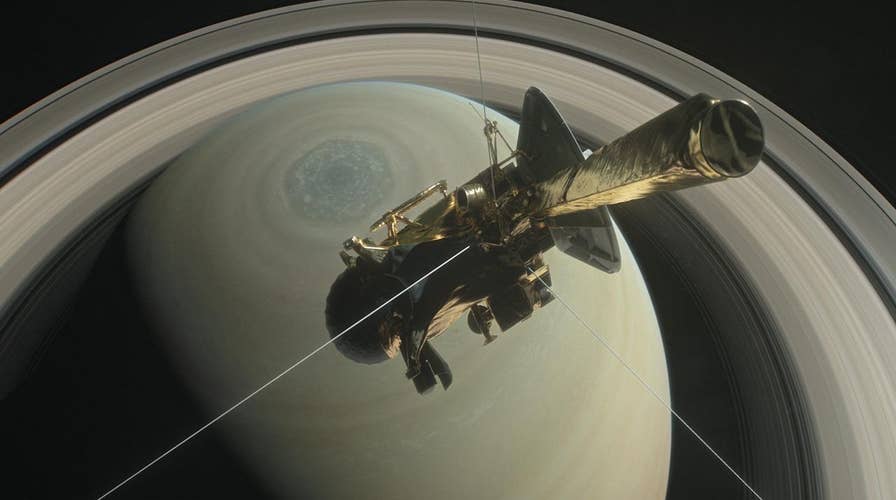NASA’s Cassini spacecraft crashed into Saturn
After a 20-year voyage orbiting Saturn’s rings, NASA’s Cassini spacecraft made its grand finale and crashed into Saturn after running out of fuel.
NASA’s Cassini spacecraft made its dramatic ‘death plunge’ into Saturn’s atmosphere Friday, ending an epic 20-year space journey.
As expected, Cassini made its final signal to Earth around 7:55 a.m. EDT. Travelling at about 70,000 mph, the orbiter broke up just seconds later.
With Cassini low on fuel, scientists opted to destroy the spacecraft rather than leaving the orbiter to drift around space.
NASA'S CASSINI PROBE FINDS 'BIG EMPTY' ON DARING SATURN RING DIVE
The team behind Cassini monitored the spacecraft’s final moments from Mission Control at NASA’s Jet Propulsion Laboratory in Pasadena, Calif. “The signal from the spacecraft is gone, and within the next 45 seconds, so will the spacecraft,” said Earl Maize, Cassini project manager. “I hope you’re all as deeply proud of this amazing accomplishment, congratulations to you all, this has been an incredible mission, an incredible spacecraft, and you’re an incredible team, I am going to call this the end of mission,” he added, to applause within the Mission Control room.

The spacecraft, which has spent 13 years exploring the Saturn system, has generated a trove of scientific data on Saturn and its moons. Earlier this year, for example, NASA announced that Saturn’s moon Enceladus could support life thanks to the discovery of hydrogen.
Scientists have been busy getting final data from Cassini and NASA has released some of the final images taken by the orbiter.
NASA'S CASSINI SPACECRAFT SET FOR 'DEATH PLUNGE' INTO SATURN’S ATMOSPHERE
Cassini made a total of 22 dives between Saturn and its rings as part of the orbiter's so-called "Grand Finale," which began May 2.
The Cassini mission began on Oct. 15 1997 when the spacecraft launched from Cape Canaveral Air Force Station aboard a Titan IVB/Centaur rocket. Cassini arrived at Saturn in 2004.NASA is partnering with the European Space Agency (ESA) and the Italian Space Agency on the Cassini-Huygens mission. The Jet Propulsion Laboratory (JPL), a division of Caltech, manages the mission for NASA’s Science Mission Directorate.
Follow James Rogers on Twitter @jamesjrogers





















